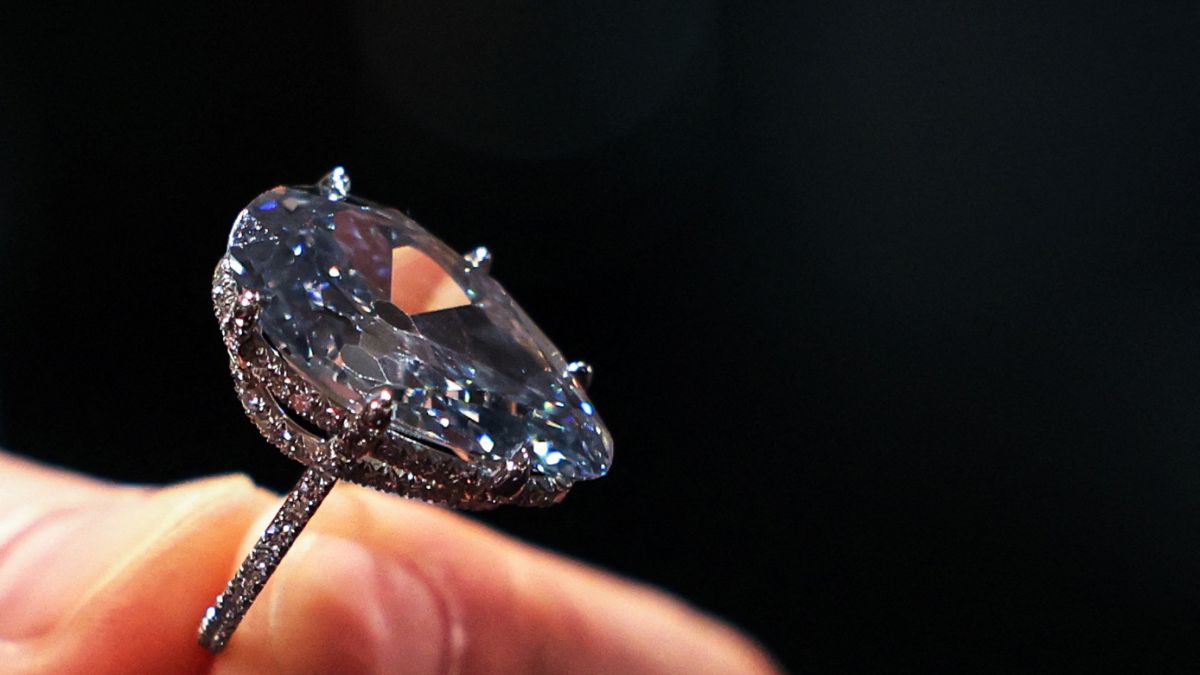Christie’s is auctioning the largest vivid blue diamond to ever go under the hammer. Dubbed ‘The Golconda Blue’, it was once owned by Indian royalty.
The diamond traces its origin to the famed Golconda mines in present-day Telangana. The British auction house will present the striking blue gem at its Magnificent Jewels sale on May 14 at the Four Seasons Hotel des Bergues in Geneva, Switzerland.
Let’s take a closer look.
History of ‘The Golconda Blue’
The Golconda Blue was a part of India’s royal heritage. According to Christie’s, the 23.24-carat pear-shaped diamond was once owned by the Maharaja of Indore, Yeshwant Rao Holkar.
Holkar and his wife were known for their sophisticated tastes and elegant lifestyle in the 1920s and 1930s.
In 1913, Tukoji Rao Holkar III, the father of Yeshwant Holkar and the then Indore ruler, obtained the popular Indore Pear diamonds from the French luxury jewellery and watch house, Chaumet. According to Chaumet’s records, he was shown “two magnificent and inseparable pear-shaped diamonds of 46.70 and 46. 95 carats”.
Ten years later, Tukoji commissioned Chaumet to set his pear-shaped Golconda blue diamond into a bracelet.
In 1933, Holkar appointed the Parisian jewellery house Mauboussin as his official jeweller. The French company redesigned the Indore king’s royal collection and created a long flowing necklace for both the Golconda Blue and the Indore Pears.
The neckpiece was immortalised in French artist Bernard Boutet de Monvel’s portrait of Maharani of Indore – Sanyogita Bai Holkar – who is seen wearing the jewellery while dressed in the vogue style of the 1930s.
Impact Shorts
More ShortsThe Indore Pears were purchased by New York jeweller Harry Winston in 1946. He cut the diamonds to 44.14 and 46.39 carats and kept them in his personal collection, as per Phillips Auction House.
Winston acquired the 23-carat blue diamond in January 1947. Later, he set it in a brooch alongside a similar white diamond weighing 23 carats. The famed jeweller later sold the brooch to the Maharaja of Baroda.
Winston then reacquired the brooch and resold it as a newly designed jewel, ending the blue diamond’s journey with the Indian royalty.
The Golconda Blue to be auctioned
The Golconda Blue, which is estimated to fetch $35-50 million (Rs 302-431 crore), will be sold at Christie ’s auction for the first time. It is mounted in a contemporary ring by celebrated jewellery artist, JAR.
“Exceptional noble gems of this calibre come to market once in a lifetime,” Rahul Kadakia, Christie’s International Head of Jewelry, was quoted as saying by Forbes. “With its Royal heritage, extraordinary colour, and exceptional size, The Golconda Blue is truly one of the rarest blue diamonds in the world.”
While The Golconda Blue is the largest diamond to go under the hammer, it will fail to live up to the most expensive diamonds sold at auction.
The 14.62-carat “Oppenheimer Blue” was sold for more than $57.5 million (Rs 495 crore) at Christie’s Geneva auction in May 2016. Currently, it is the most costly fancy vivid blue diamond to be auctioned, as per Forbes.
In April 2022, the 15.10-carat “De Beers Blue” was sold at Sotheby’s Hong Kong auction for a whopping $57.4 million (Rs 494 crore).
Other famous ‘Golconda’ diamonds
The Golconda diamonds are the world’s finest transparent and rare gems.
Some of the most famous Golconda stones include the Koh-i-Noor, the Agra Diamond, the Hope Diamond at America’s Smithsonian National Museum of Natural History, the Darya-i-Nur in Iran and The Princie Diamond.
At 45.52 carats, the Hope Diamond is the largest known fancy blue diamond.
With inputs from agencies
)